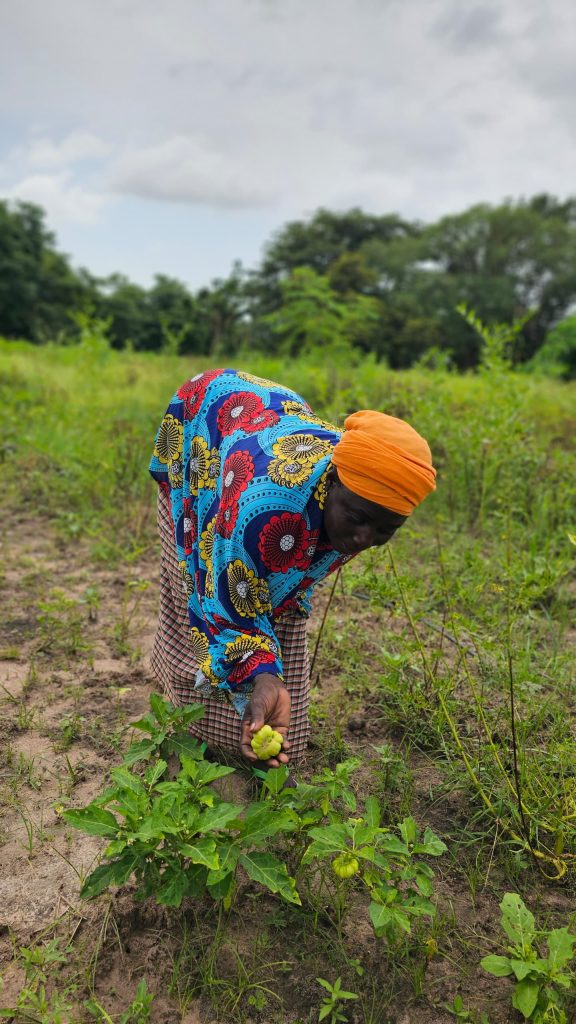Working at the community garden has become a meaningful part of daily life for the 90 women farmers in Jiffarong. Their work not only strengthens local livelihoods but also brings the community closer together. Each woman plants her own seeds and tends to her crops, yet the garden remains a shared space, nurtured and cared for collectively. Tasks like maintaining communal areas and watering are done together. Recently, the women planted lemon tree seedlings side by side to help protect the garden from heavy rains and flooding.
But what does a typical day at the garden look like? And how do the farmers balance their time between the garden and their families?


The day begins early, often at sunrise. The air is cool, the light soft, and the sun still gentle, the perfect conditions for tending to the crops. Each farmer decides what to grow and takes full responsibility for her own plot. Morning hours are spent checking the plants, removing weeds, and harvesting vegetables that are ready to be picked.
As midday heat rises, the women return home to cook lunch for their families. Many have small children, and the youngest often spend the day with their mothers at the garden. The farmers keep part of their harvest for home use and sell the rest at the local market to generate income.
In the afternoon, as the temperature cools once more, the women return to the garden for the final tasks of the day: finishing weeding, watering the crops, and preparing the land for the next round of planting.
One of the local farmers, Binta Barrow, shared what a typical day looks like for her:
“I wake up at 7 a.m., and the first thing I do is prepare porridge for breakfast for my children before starting my day at the garden. By 8 a.m., breakfast is finished, and an hour later I head to the garden to cultivate onions, tomatoes, okra, hot peppers, sweet peppers, bitter tomatoes, and eggplants until noon. After that, I return home to prepare lunch for the family.
If I happen to be making Domoda, I prepare the fish and take two liters of water, pour it into the cooking pot, and place it on the fire. I add ground peanuts and let it boil before adding tomato paste, fish, sliced onions, and pepper. Once ready, I serve it to the family for lunch.
From 3 to 4 p.m., I return to the garden and continue weeding until 5 p.m., ending the day by watering the crops.”
In addition to caring for her family and maintaining her garden plot, Binta is one of the loan recipients from the revolving fund. She is now among Jiffarong’s most successful women entrepreneurs. Through her business, she sells fish in Jiffarong and the surrounding areas, and she has recently received another loan to expand her enterprise. We will be sharing more about Binta’s story soon.